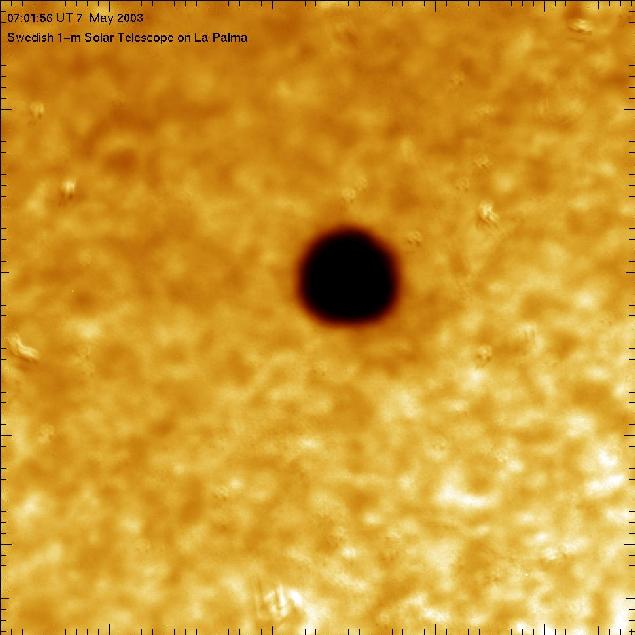Mercury Transit on May 7, 2003 Central Display and Webcam... We are online with you during the entire event DO NOT FORGET THAT IT IS DANGEROUS TO OBSERVE THE SUN WITHOUT SPECIAL PROTECTION! The only completely safe way is to project an image of the sun on a white surface (for instance, a piece of paper or cardboard). Latest Information (May 7, 09:05 hrs CEST -- 07:05 hrs UT) The transit is underway since almost 2 hour! Images from the telescope at ESO and other places are now coming at a regular rate. The one from ESO may be seen via the webcam Mercury is well visible as a small black spot at the upper right on the solar disk. Please note that the solar image is reversed by the telescope optics - this is why Mercury is moving from right to left in these images. The images are updated every 1 minute in principle. Note that a small sunspot is visible to the lower left of Mercury's disk - it will be interesting to see how close Mercury will "pass by"! The load on the ESO website has been mounting during the past half hour. Although it is not (yet) critical, it may well be that you will need a little patience to see the images. |  | Zoom in close to Mercury with the 1-m Solar Telescope of the Swedish Academy of Sciences, located at La Palma. Note the granulation on the Sun. The photosphere has a "grainy" texture with individual cells measuring about 1000 km in diameter. This is called granulation and change every few minutes. These cells are caused by rising (convective) cells of hot gas. For more details on the sun, see here. |
previous images... 1 2 3 4 5 6 7
Recent Images Here is a collection of recent images obtained in different places. |
|
|
| | |